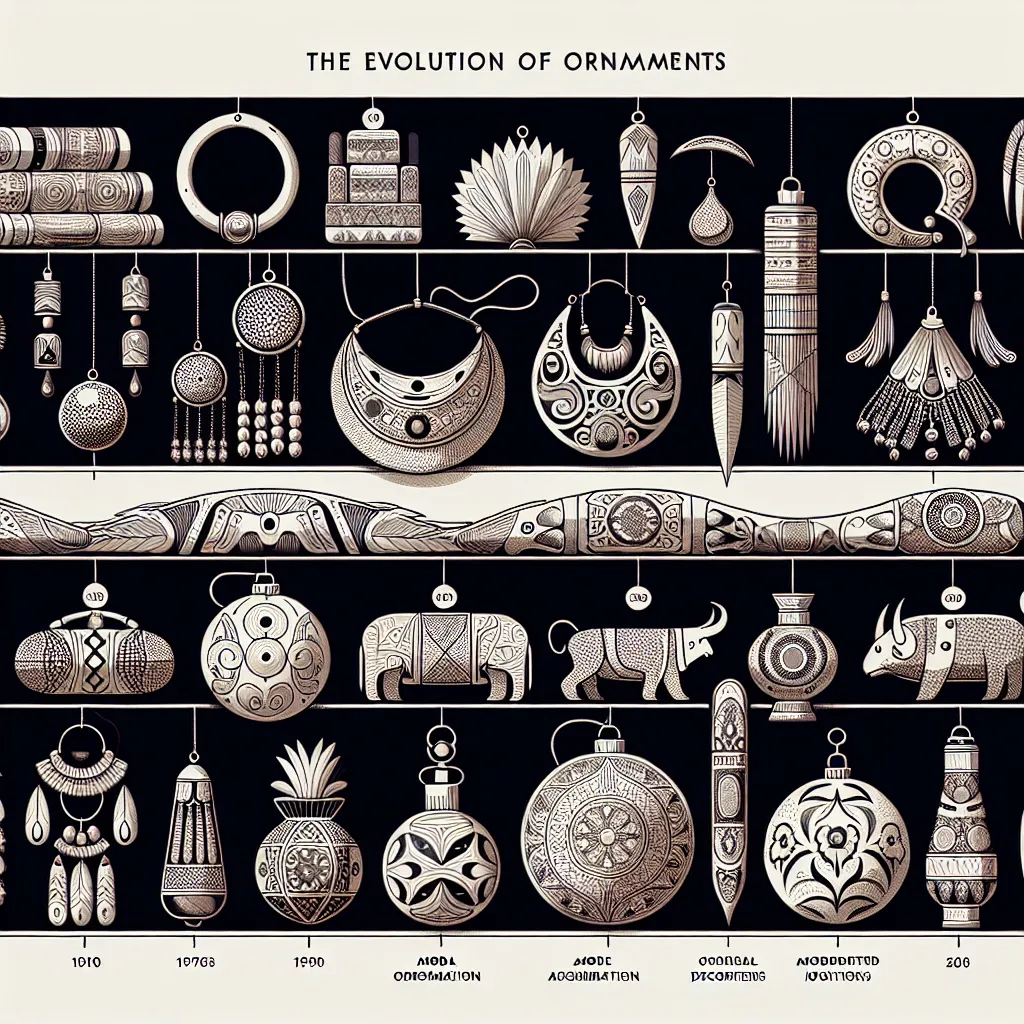Ancient Origins of Ornaments: Tracing Back the Beginnings
When exploring the history of ornaments, it is essential to trace back to their ancient origins. The use of ornaments dates back to the earliest human civilizations, with evidence of ornamental objects found in ancient archaeological sites around the world. In ancient times, ornaments were crafted from various materials such as shells, bones, feathers, and stones, reflecting the cultural and artistic preferences of different societies.
Ancient civilizations such as the Egyptian, Mesopotamian, Greek, and Roman societies adorned themselves with a wide array of ornaments, including intricate jewelry, decorative hairpins, and ornate accessories. These ancient ornaments not only served as embellishments but also held significant cultural, religious, and symbolic meanings. For example, in ancient Egypt, amulets and jewelry were intricately designed to provide protection and ward off evil spirits, while in ancient Greece, jewelry was often linked to religious beliefs and social status.
Furthermore, the intricate craftsmanship and attention to detail in ancient ornaments showcase the advanced skills of early artisans, laying the foundation for the evolution of ornamentation in the succeeding centuries. The fascination with adorning the body and surrounding spaces with ornamental objects has persisted throughout history, shaping the cultural and artistic landscapes of diverse civilizations.
As we delve into the origins of ornaments, it becomes evident that their significance transcends mere decorative purposes, offering insights into the beliefs, customs, and artistic expressions of ancient societies. The enduring appeal of ornaments from ancient times continues to inspire modern trends, serving as a testament to the timeless allure of ornamentation.
Evolution of Ornaments through the Middle Ages
During the Middle Ages, the evolution of ornaments took on a new significance as they became not only symbols of wealth and status, but also powerful religious and cultural icons. Ornamentation in this period was heavily influenced by the dominant religious and political institutions, resulting in a fusion of diverse cultural influences and artistic styles.
One of the most prominent forms of ornamentation during the Middle Ages was found in the intricate designs of illuminated manuscripts, where meticulous decorative elements were interwoven with religious texts. These manuscripts showcased the craftsmanship of skilled scribes and illuminators, and featured ornamental motifs such as interlace patterns, floral designs, and ornate initials.
Architectural ornamentation also flourished during the Middle Ages, with elaborate carvings, sculptures, and decorative elements adorning cathedrals, churches, and castles. The Gothic style, characterized by its soaring spires, pointed arches, and intricate tracery, incorporated ornamental elements that reflected the spiritual and cosmic themes of the era.
The use of precious metals and gemstones in ornaments was widespread among the nobility and clergy, reflecting their social status and wealth. Ornate jewelry, such as intricately crafted brooches, rings, and pendants, often featured symbolic motifs drawn from religious narratives or heraldic emblems.
As the Middle Ages progressed, the Renaissance period heralded a shift in artistic expression and ornamentation, marking the transition to new aesthetic sensibilities and design principles.
From illuminated manuscripts to architectural marvels, the evolution of ornaments through the Middle Ages reflects the intricate interplay of religious, cultural, and artistic influences that shaped the rich tapestry of medieval ornamentation.
Renaissance to Baroque: Ornamentation in Art and Architecture
During the Renaissance and Baroque periods, ornamentation played a significant role in the art and architecture of the time. These periods were characterized by a resurgence of interest in classical antiquity, which heavily influenced the design and decoration of buildings, as well as art objects.
In art, the use of ornamentation was evident in the intricate details found in paintings, sculptures, and decorative arts. Artists such as Michelangelo and Raphael incorporated elaborate ornamentation in their works, often drawing inspiration from ancient Roman and Greek motifs. Ornamental features such as garlands, mythological figures, and intricate floral patterns adorned the surfaces of many art pieces, adding a sense of opulence and grandeur.
In architecture, the use of ornamentation reached its peak during the Baroque period, where buildings were adorned with elaborate facades, intricate stucco work, and ornate detailing. Architects such as Bernini and Borromini employed decorative elements such as cartouches, volutes, and arabesques to create visually stunning edifices that exuded grandiosity and splendor.
The ornamentation of this period served not only as an embellishment but also as a reflection of the social and political climate of the time. It was used to convey power, prestige, and wealth, with ornate decorations adorning palaces, churches, and public buildings.
The craftsmanship and attention to detail in ornamentation during the Renaissance and Baroque periods have left a lasting legacy, influencing design movements and trends for centuries to come.
In the modern era, the evolution of ornamentation in art and architecture continues to be influenced by the rich traditions established during these historic periods, with contemporary designers and artists drawing inspiration from the intricate and lavish ornamentation of the Renaissance and Baroque.
Contemporary Trends in Ornament Design and Beyond
Contemporary trends in ornament design reflect the ever-evolving tastes and preferences of modern society. As we look to the past for inspiration, we also strive to infuse our designs with a touch of innovation and individuality. In today’s world, ornamentation has expanded beyond traditional materials like wood, metal, and stone to include unconventional mediums such as recycled materials, 3D printing, and digital art. The shift towards sustainable and eco-friendly practices is also influencing ornament design, with an emphasis on using natural, biodegradable materials and embracing minimalist aesthetics.
Furthermore, contemporary ornament design is increasingly influenced by cultural diversity, social movements, and technological advancements. Artists and designers are incorporating elements from various global cultures, celebrating diversity, and bridging the gap between tradition and modernity. In addition, ornamentation is being used as a means of personal expression and storytelling, with designers infusing their creations with symbolism and narrative.
Looking ahead, the future of ornament design seems to be closely intertwined with technology. Virtual and augmented reality, interactive installations, and dynamic lighting are redefining how we perceive and interact with ornaments. The boundaries between art, design, and technology continue to blur, opening up new frontiers for creative expression and pushing the limits of traditional ornamentation.
As we navigate the complexities of the modern world, contemporary ornament design serves as a reflection of our society, values, and aspirations. It encapsulates our journey from the past, through the present, and into the future, constantly evolving and reshaping the visual landscape of our surroundings.

